- Home
- Joel C. Rosenberg
Inside the Revolution
Inside the Revolution Read online
Visit Tyndale’s exciting Web site at www.tyndale.com.
TYNDALE and Tyndale’s quill logo are registered trademarks of Tyndale House Publishers, Inc.
Inside the Revolution: How the Followers of Jihad, Jefferson & Jesus Are Battling to Dominate the Middle East and Transform the World
Copyright © 2009, 2011 by Joel C. Rosenberg. All rights reserved.
Cover photo of Osama bin Laden copyright © by epa/Corbis. All rights reserved.
Cover illustration of Thomas Jefferson copyright © by Rembrandt Peale/Getty Images. All rights reserved.
Cover illustration of Jesus used by permission of Bridgeman Art Library. All rights reserved.
Author photo copyright © 2005 by Joel C. Rosenberg. All rights reserved.
Unless otherwise indicated, all Scripture quotations are taken from the New American Standard Bible,® copyright © 1960, 1962, 1963, 1968, 1971, 1972, 1973, 1975, 1977, 1995 by The Lockman Foundation. Used by permission.
Scripture quotations marked KJV are taken from The Holy Bible, King James Version.
Scripture quotations marked NIV are taken from the Holy Bible, New International Version,® NIV.® Copyright © 1973, 1978, 1984 by Biblica, Inc.™ Used by permission of Zondervan. All rights reserved worldwide.
Scripture quotations marked NLT are taken from the Holy Bible, New Living Translation, copyright © 1996, 2004, 2007 by Tyndale House Foundation. Used by permission of Tyndale House Publishers, Inc., Carol Stream, Illinois 60188. All rights reserved.
The Library of Congress has cataloged the hardcover edition as follows:
Rosenberg, Joel C., date.
Inside the revolution : how the followers of Jihad, Jefferson & Jesus are battling to dominate the Middle East and transform the world / Joel C. Rosenberg.
p. cm.
Includes bibliographical references and index.
ISBN 978-1-4143-1931-5 (hc)
ISBN 978-1-4143-1932-2 (sc)
1. Middle East—Politics and government—1979- 2. Jihad. 3. Islamic fundamentalism. 4. Terrorism. I. Title.
DS63.1.R67 2009
956.05'4—dc22 2008049076
ISBN 978-1-4143-1932-2 (sc)
Build: 2014-03-13 10:55:59
To Caleb, Jacob, Jonah and Noah,
our revolutionaries in training
Table of Contents
Note to Readers
Introduction
Part One: The Radicals
Chapter One: Worst-Case Scenario
Chapter Two: “Islam Is the Answer; Jihad Is the Way”
Chapter Three: The Theology of the Radicals
Chapter Four: “We Were Asleep”
Chapter Five: Tragedy at Desert One
Chapter Six: “We Must Export Our Revolution”
Chapter Seven: Christmas in Kabul
Chapter Eight: Declaring War on America
Chapter Nine: Unleashing the Islamic Bomb
Chapter Ten: Terror High
Chapter Eleven: Revolution 2.0
Chapter Twelve: Making Way for the Mahdi
Chapter Thirteen: The Road Ahead
Part Two: The Reformers
Chapter Fourteen: “Islam Is the Answer, but Jihad Is Not the Way”
Chapter Fifteen: The Theology of the Reformers
Chapter Sixteen: The Defector
Chapter Seventeen: Meet Hamid Karzai
Chapter Eighteen: Karzai’s Mission
Chapter Nineteen: “We Are Fighting Islamic Fascists”
Chapter Twenty: Meet Jalal Talabani
Chapter Twenty-One: Talabani’s Test
Chapter Twenty-Two: The King and I
Chapter Twenty-Three: The Moroccan Model
Part Three: The Revivalists
Chapter Twenty-Four: “Islam Is Not the Answer, and Jihad Is Not the Way; Jesus Is the Way”
Chapter Twenty-Five: The Big, Untold Story—Part One
Chapter Twenty-Six: The Big, Untold Story—Part Two
Chapter Twenty-Seven: The Air War
Chapter Twenty-Eight: The Ground War—Part One
Chapter Twenty-Nine: The Ground War—Part Two
Chapter Thirty: The Theology of the Revivalists
Chapter Thirty-One: Making Way for the Messiah
Chapter Thirty-Two: Join the Revolution
Appendix: 20 Terror Plots against America FOILED since 9/11
Acknowledgments
About the Author
Recommended Reading
Notes
Note to Readers
Though there are a number of different ways to spell the name of the founder of Islam, I have chosen for clarity and simplicity to use the standard spelling “Muhammad.” In the case of those individuals cited in the book who go by the same name, I use the spelling of their choice. Some prefer “Mohammed”; others prefer “Mohammad.”
In addition, while there are several ways to spell the name of the book Muslims believe contains their Islamic scriptures, I have chosen for clarity and simplicity to use the standard spelling “Qur’an.” The specific edition cited throughout this book is The Qur’an with Annotated Interpretation in Modern English by Ali Unal, produced by Light Publishers in New Jersey in 2006. This edition was both given to me and recommended to me as the best English translation by my friend Dr. Ahmed Abaddi, one of the top Muslim scholars in Morocco.
Unless otherwise noted, citations from the Bible throughout this book are from the New American Standard translation of The Holy Bible. I note the use of other translations with the abbreviation “NIV” for the New International Version and “KJV” for the King James Version.
Introduction
Not “If” but “When”
On April 1, 1979, Iran became the first Islamic republic in history.
Three decades later, the shock waves from the Iranian Revolution are still being felt around the globe. Iran today is the most dangerous terrorist state on the face of the planet. What’s more, we are rapidly approaching the most dangerous moment in the history of the Iranian Revolution.
Iran’s senior leaders have taught in recent years that the Revolution is now reaching its climax. They have stated publicly that the end of the world is “imminent.” They have taught that the way to hasten the arrival or appearance on earth of the Islamic messiah known as the “Twelfth Imam,” or the “Mahdi,” is to destroy Israel, which they call the “Little Satan,” and the United States, which they call the “Great Satan.” They have vowed to annihilate the United States and Israel and have urged Muslims to envision a world without America and Zionism. They have come to believe that Allah has chosen them to create chaos and carnage on the planet.
The key leaders in Iran seem hell-bent on accomplishing their apocalyptic, genocidal mission. They are feverishly trying to build, buy, or steal nuclear weapons. Iran is actively testing advanced ballistic missiles capable of delivering nuclear warheads. Tehran is building alliances with Russia, China, and North Korea—all nuclear-armed powers—and has cooperated on the development of offensive and defensive weapons systems with those countries.
Iran’s leaders are building a network of thousands of suicide bombers ready to strike American targets. They are sending suicide bombers and other insurgents, money, and weapons into Iraq to kill Iraqis as well as American and Coalition forces. They are harboring scores of al Qaeda terrorists and leaders inside Iranian cities and allowing terrorists to crisscross their territory. They are making a concerted effort to enlarge the reach of terrorist operations by building strategic alliances with other jihadist organizations, regardless of their theological differences.
The Iranian leaders are digging hundreds of thousands of new graves in Iran itself to bury the enemies of Islam. They are calling
for the unification of the Islamic world politically and economically, including the creation of a single currency. They are aggressively exporting their Islamic Revolution to countries throughout the Middle East and around the world.
Put simply, the leaders of Iran believe that Allah is on their side, the wind is at their back, and the end of Judeo-Christian civilization as we know it is near.
I believe just the opposite. As an evangelical Christian with a Jewish father and a Gentile mother, I worship the God of the Bible—the God of Abraham, Isaac, and Jacob, who is also the God of the New Testament. I do not believe that God is on the side of the zealots that run Iran. Rather, I believe that the end of their reign of terror is increasingly close at hand. Every day I pray for the peace of Jerusalem. Every day I pray for peace throughout the Middle East. What’s more, I pray for the salvation of the leaders of Iran and the salvation of their terrorist allies, and I encourage others to do the same. And because I serve a prayer-hearing and prayer-answering God, a wonder-working God of miracles, I firmly believe that God in His grace can change the leadership in Iran.
That said, the God of the Bible may have other plans. If, in His sovereignty, He chooses not to remove the Radicals from Iran peacefully, then I believe a major, cataclysmic war or series of wars is coming soon as a direct result of the Iranian Revolution that was set into motion by the Ayatollah Khomeini in 1979. The United States, NATO, Israel, or some combination thereof could initiate a preemptive strike to neutralize the Iranian nuclear threat. If they do not, Iran will soon be poised to launch the apocalyptic war required by its theology to destroy the West and usher in the end of days. The question we all must be asking is not if there will be war with Iran but when it will begin and who will strike first.
A Clear and Present Danger
Iran, however, is not the only threat.
Osama bin Laden and his al Qaeda terrorist network remain a clear and present danger to the national security and economic vitality of the United States, the State of Israel, and our Western allies. While al Qaeda has certainly been badly damaged by U.S. and Coalition forces in recent years, they are by no means defeated. Rather, they are doing everything they can to reconstitute themselves in Afghanistan, Iraq, Pakistan, North Africa, and elsewhere around the world. They are building new alliances, recruiting new jihadists, raising more money, acquiring more weapons, and plotting new attacks.
For the past several years, many Americans, Canadians, Europeans, and others have asked, “Why are the Americans at war in Iraq and Afghanistan when they have not been hit by any terrorist attacks inside the borders of the United States since September 11, 2001? What’s the point of all this fighting if the American people are no longer in danger?” This sentiment reveals a fundamental misunderstanding of the history of the last eight years and of the jihadists’ intentions and preparations. True, as of this writing, the U.S. homeland has not been hit with terrorist attacks since 9/11, but that is not because the jihadists are not trying.
There are actually three reasons we have not been hit again—not yet, at least.
First, the U.S. and our allies are getting significantly better at identifying terrorist plots early and intercepting them before they can be set into motion. Indeed, dozens of terror plots have been foiled by U.S. and allied intelligence and law enforcement agencies in recent years. I will recount several of those disrupted operations along the way, and I have included more such successes in an appendix to this book.
Second, after 9/11, the U.S. and our allies remained on offense against the jihadists throughout the years President George W. Bush served in office. We were not waiting to be hit, as we seemed to be doing prior to 9/11. We took the fight to the enemy in Iraq and Afghanistan rather than wait for the jihadists to come to us. In the process, we effectively created in Iraq and Afghanistan two magnets that drew local and international jihadists into contact with the best-trained and best-equipped militaries in the history of mankind. These battles have not been easy. Thousands of brave American and Coalition men and women have sacrificed their lives to defeat the jihadists overseas. But to date we have been winning. From 2003 to 2008, for example, our forces killed nearly 20,000 terrorists and insurgents and captured more than 25,000 in Iraq alone.1 That means some 45,000 Radical Islamic jihadists are now unable to travel west, infiltrate the United States, and strike inside our borders.
That said, there is a third reason why we have not yet been hit again, and it is a sobering one, to say the least: al Qaeda is planning larger attacks. Senior al Qaeda leaders no longer want to merely frighten us; they want to annihilate us. They no longer seek only to inflict minor damage on planes, trains, buses, restaurants, malls, and other “soft targets” that have little or no external security. Rather, they are plotting to inflict catastrophic damage on the U.S. and our allies.
To accomplish their objectives, the Radicals need weapons of mass destruction. They need more accurate ballistic missiles and long-range missiles capable of reaching all of Europe and the United States. They need followers who are religiously and ideologically committed to helping them carry out their plans and—if at all possible—infiltrate the American homeland and set off catastrophic attacks from the inside.
What they need most—what they pray for most of all—is Western ignorance, apathy, and lack of moral clarity. If the West can be lulled to sleep, if free people the world over can somehow be prevented from understanding the true goals and objectives of the Radicals and mobilizing to take all necessary actions to prevent their success, then the Radicals will soon be able to pull off a series of attacks that make 9/11 pale by comparison and could leave millions dead, not thousands.
Not One Revolution but Three
Thirty years after the rise of the Ayatollah Khomeini to power in Iran, it has become clear to me that there is not simply one Revolution under way; there are three. Each is pursued with equal passion and vigor by groups I define as the “Radicals,” the “Reformers,” and the “Revivalists.” And with the stakes so high—and time so short—there are important questions to be answered, and fast.
How, for example, can citizens and leaders in the West properly understand and counter the threat Islamic Radicals pose to Judeo-Christian civilization? How can we understand what is really going on inside the minds of the Radicals? When they read the Qur’an, what verses drive them to rob, kill, and destroy? Is there any way to persuade them to not carry out their apocalyptic agendas? Diplomacy has not worked so far, but might direct negotiations at the highest possible level—president to president—work? Or is that a fool’s errand?
At the same time, are there any Muslim leaders pushing back against the jihadists? Are there any leaders who think the Radicals are crazy and dangerous and who are willing to say so? If so, who are they? What verses in the Qur’an do these Reformers point to in making their case that Islam is a “religion of peace”? What are their personal stories? How did they climb to power, and why don’t we hear more about them in the media? Do such Reformers really have any chance at remaking the modern Middle East and winning the war of ideas—as well as the war of bullets and bombs—with the Radicals?
What’s more, are war and politics the only prescriptions for what ails the people of the Middle East today? Are there any sources of true hope? Is Christianity really dying out in the lands of its birth, as many claim, or is it true that more Muslims are coming to faith in Jesus Christ today than at any other time in history? Is there any evidence that Christianity is surging in the epicenter? Who are the Revivalists, and what is the message of spiritual hope and change they are trying to spread? And if Muslims are converting to Christianity in record numbers as some have suggested, what are the implications of this trend for the Church in the West and around the world?
These are questions I have often been asked since the 9/11 attacks, as I have written fiction and nonfiction books about events in the Middle East, been interviewed hundreds of times by U.S. and foreign media outlets, and had the honor of s
peaking to audiences around the world. What follow are the answers I have found and the conclusions I have drawn after traveling to Iraq, Afghanistan, Egypt, Jordan, Turkey, Morocco, the United Arab Emirates, central Asia, Israel, the West Bank, Europe, and Canada, as well as throughout the U.S., doing research and meeting with key participants inside these ongoing Revolutions.
In the pages ahead, you will hear key leaders of each movement making their own cases and speaking in their own words. You will read direct quotes taken from the speeches, textbooks, memoirs, manifestos, Web sites, and videos written or produced by the Radicals, Reformers, and Revivalists themselves. You will see verses from the books they consider holy. You will find excerpts from captured and intercepted memos and diaries they have written. I have also quoted transcripts of previously classified interrogation sessions and from exclusive, never-before-published interviews, many of which I conducted myself. You will also hear from those who have devoted their lives to hunting or confronting the Radicals, including presidents, prime ministers, CIA directors, intelligence operatives, military leaders, and members of Congress, as well as Americans who have been directly impacted by terrorist attacks.
Among those whom I had the privilege of personally interviewing during the course of researching this book:
Porter Goss, Director of the Central Intelligence Agency (2004–2006) and chairman of the House Permanent Select Committee on Intelligence (1997–2004)
Lieutenant General (ret.) William “Jerry” Boykin, U.S. Deputy Undersecretary of Defense for Intelligence and Special Warfighting (2003–2007), former commander of Delta Force, and author of Never Surrender: A Soldier’s Journey to the Crossroads of Faith and Freedom
L. Paul Bremer III, presidential envoy to Iraq and first U.S. administrator after liberation (2003–2004), and author of My Year in Iraq: The Struggle to Build a Future of Hope
Fred Schwien, senior advisor to U.S. Homeland Security Secretary Michael Chertoff
Lynn Derbyshire, chief spokeswoman for the families of the U.S. Marines killed in the Beirut truck bombing of 1983

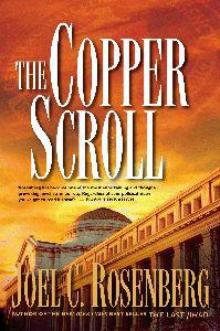 The Copper Scroll
The Copper Scroll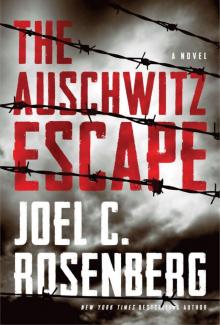 The Auschwitz Escape
The Auschwitz Escape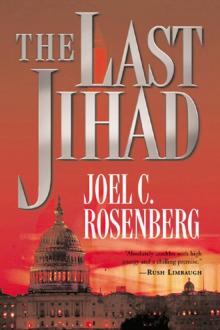 The Last Jihad
The Last Jihad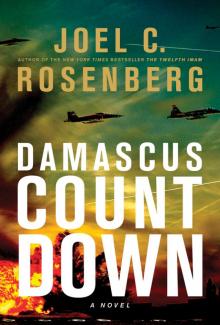 Damascus Countdown
Damascus Countdown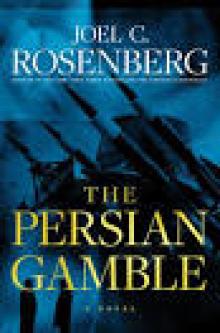 The Persian Gamble
The Persian Gamble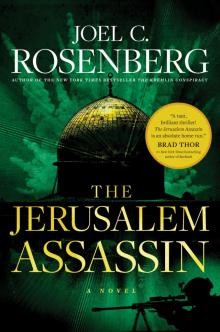 The Jerusalem Assassin
The Jerusalem Assassin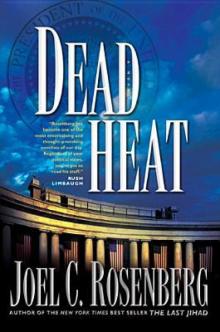 Dead Heat
Dead Heat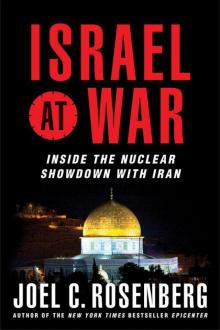 Israel at War: Inside the Nuclear Showdown With Iran
Israel at War: Inside the Nuclear Showdown With Iran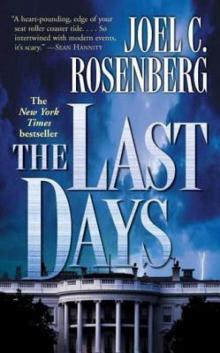 The Last Days
The Last Days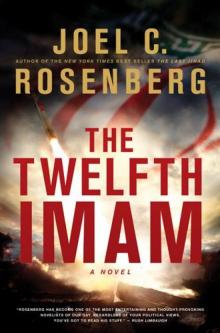 The Twelfth Imam
The Twelfth Imam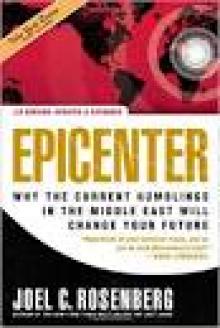 Epicenter 2.0
Epicenter 2.0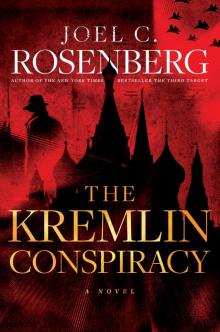 The Kremlin Conspiracy
The Kremlin Conspiracy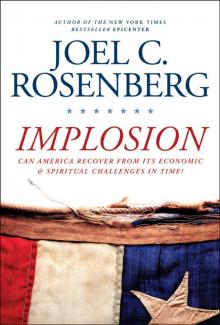 Implosion: Can America Recover From Its Economic and Spiritual Challenges in Time?
Implosion: Can America Recover From Its Economic and Spiritual Challenges in Time?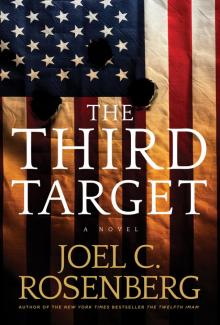 The Third Target: A J. B. Collins Novel
The Third Target: A J. B. Collins Novel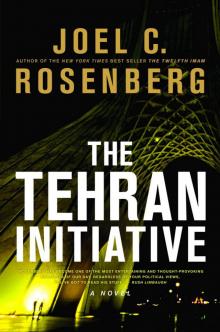 The Tehran Initiative
The Tehran Initiative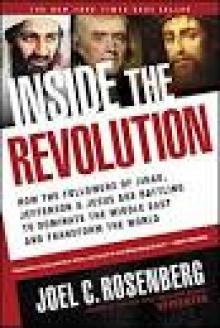 Inside the Revolution
Inside the Revolution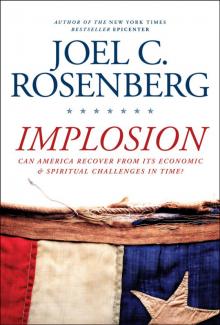 Implosion
Implosion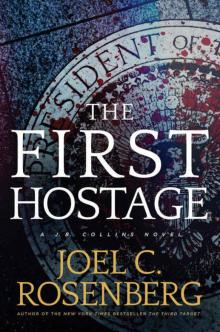 The First Hostage: A J. B. Collins Novel
The First Hostage: A J. B. Collins Novel